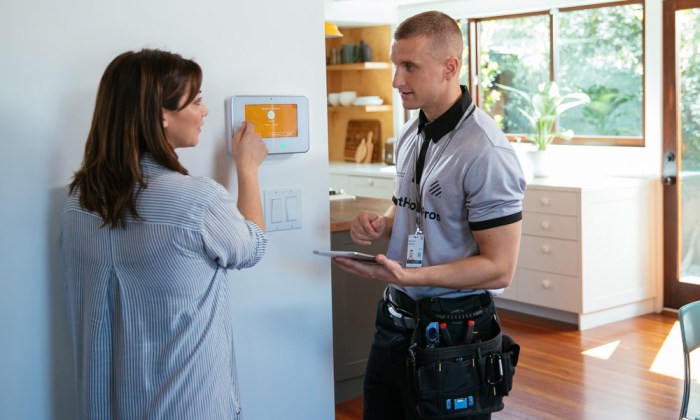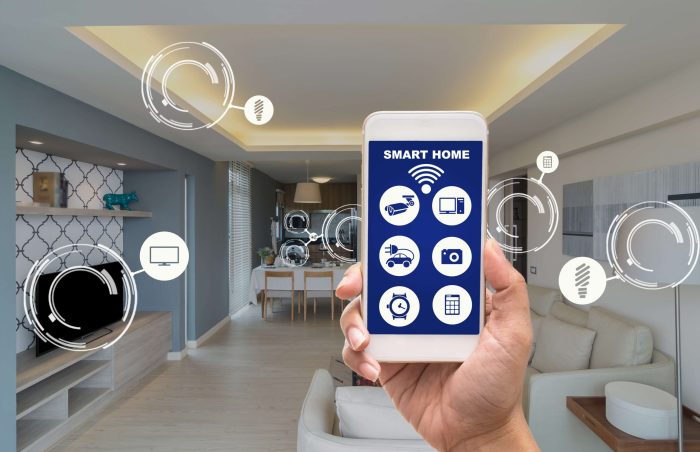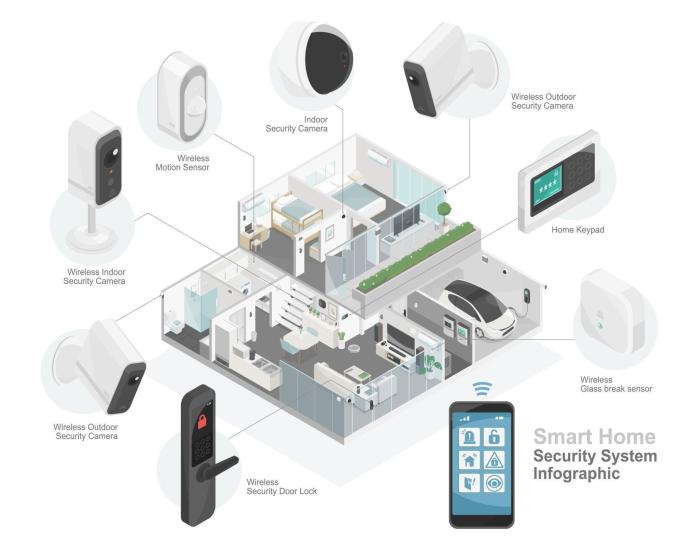General
Smart Security System Installation: Ensuring Safety Through Technology

With smart security system installation at the forefront, this paragraph opens a window to an amazing start and intrigue, inviting readers to embark on a storytelling casual formal language style filled with unexpected twists and insights.
Smart security systems have revolutionized the way we protect our homes and businesses. By combining cutting-edge technology with robust security measures, these systems offer a new level of peace of mind and convenience. Let's delve into the world of smart security system installation and explore the key aspects that make it a game-changer in the realm of safety and security.
Importance of Smart Security Systems

Smart security systems play a crucial role in enhancing the safety and security of both homes and businesses. These systems offer a wide range of benefits that provide peace of mind and protection against potential threats.Installing a smart security system can significantly increase the level of security for your property.
These systems are equipped with advanced technology that allows for real-time monitoring, alerts, and remote access, giving you the ability to keep an eye on your property at all times.
Enhanced Security Features
- Video Surveillance: Smart security systems often come with high-definition cameras that provide clear footage of any suspicious activity around your property.
- Smart Sensors: These systems include sensors that can detect motion, sound, or even changes in temperature, alerting you to any potential threats.
- Mobile App Integration: With smart security systems, you can monitor your property remotely through a mobile app, receive alerts, and even control the system from anywhere.
- Smart Locks: Some systems offer the ability to lock and unlock doors remotely, adding an extra layer of security and convenience.
- Integration with Smart Home Devices: Smart security systems can be integrated with other smart home devices, creating a seamless and comprehensive security solution.
Planning for Installation
When planning for the installation of a smart security system, it is crucial to consider various factors to ensure the system meets the specific needs of the property and provides adequate protection. Assessing the layout and potential vulnerabilities of the property is essential before proceeding with the installation process.
Choosing the Right Smart Security System
- Consider the size of the property: Larger properties may require more cameras and sensors for comprehensive coverage.
- Review the features offered: Look for systems that include motion detection, night vision, two-way audio, and remote access through a mobile app for added convenience.
- Evaluate the scalability: Choose a system that can be easily expanded or upgraded in the future to accommodate any changes in security needs.
- Check compatibility with other smart devices: If you already have smart home devices, ensure that the security system can integrate seamlessly with them.
Assessing Property Layout and Vulnerabilities
Before installing a smart security system, it is important to assess the layout of the property and identify potential vulnerabilities that need to be addressed. Factors to consider include:
- Entry points: Determine the number of doors, windows, and other entry points that need to be monitored.
- Outdoor areas: Assess the exterior of the property to identify blind spots or areas that may be vulnerable to break-ins.
- Valuables: Identify areas where valuable items are kept to ensure they are adequately protected by the security system.
- Existing security measures: Evaluate any existing security measures in place and determine how the smart security system can complement or enhance them.
Installation Process

When it comes to installing a smart security system, there are several steps involved to ensure that it is set up correctly and efficiently. Whether you choose to hire professionals or opt for a DIY installation, understanding the process can help you make informed decisions and avoid common challenges along the way.
Professional Installation
- Professionals will conduct a site assessment to determine the best locations for cameras, sensors, and other components.
- They will install the necessary hardware, such as cameras, sensors, and control panels, ensuring everything is connected and functioning properly.
- Professionals will then program the system, set up user accounts, and provide you with instructions on how to use the system effectively.
- Finally, they will conduct a thorough test to ensure that the system is working correctly and provide ongoing support if needed.
DIY Installation
- DIY installation involves following the manufacturer's instructions carefully to set up the system on your own.
- You will need to mount cameras, sensors, and other components in the designated locations and ensure they are securely installed.
- Programming the system and setting up user accounts will be your responsibility, along with testing the system to ensure it is working correctly.
- While DIY installation can be cost-effective, it may require more time and effort on your part compared to professional installation.
Common Challenges and Solutions
- One common challenge during installation is ensuring that all components are properly connected and communicating with each other. To overcome this, carefully follow the installation instructions and troubleshoot any connectivity issues.
- Another challenge is determining the optimal placement of cameras and sensors to maximize coverage while minimizing blind spots. You can overcome this by conducting a thorough site survey before installation and adjusting the placement as needed.
- Lastly, troubleshooting technical issues that may arise during installation, such as connectivity issues or system errors, can be challenging. Refer to the manufacturer's troubleshooting guide or seek assistance from customer support to resolve these issues effectively.
Integration and Connectivity
Smart security systems play a crucial role in the broader ecosystem of smart home devices by integrating seamlessly with various interconnected technologies. This integration and connectivity not only enhance the overall security of your home but also provide convenience and control like never before.
Interconnected Devices Enhance Overall Security
Smart security systems can be interconnected with other smart home devices such as smart locks, lights, cameras, and motion sensors. This interconnected network allows for a more comprehensive approach to home security, where different devices work together to provide a holistic protection system.
For example, when a motion sensor detects movement, it can trigger the smart lights to turn on and the security camera to start recording, while simultaneously sending a notification to your smartphone. This level of connectivity ensures that you are always aware of what is happening in and around your home, even when you are not physically present.
Importance of Connectivity for Remote Monitoring and Control
One of the key benefits of integrating smart security systems with other devices is the ability to remotely monitor and control your home security system. Through a smartphone app or a web portal, you can access live camera feeds, receive alerts, arm or disarm the system, and even communicate with visitors at your doorstep.
This level of connectivity provides peace of mind and convenience, allowing you to keep an eye on your home from anywhere in the world.
Examples of Enhanced Security through Interconnected Devices
- Integration of smart locks with security cameras allows for visual verification of individuals attempting to enter your home, providing an extra layer of security.
- Connecting smart smoke detectors with security systems can automatically alert emergency services in case of a fire, even when you are not home.
- Pairing motion sensors with smart lights can deter potential intruders by creating the illusion of someone being present in the house.
Maintenance and Troubleshooting

Regular maintenance and troubleshooting are essential for ensuring your smart security system functions optimally and provides the highest level of security for your property.
Tips for Maintaining a Smart Security System
- Regularly check all cameras, sensors, and other components for any signs of damage or malfunction.
- Keep the lenses of your cameras clean to ensure clear footage at all times.
- Test your system periodically to make sure all features are working correctly.
- Update your security system's software and firmware as soon as new versions are released.
- Replace batteries in wireless devices as needed to prevent any power failures.
Common Troubleshooting Issues and Solutions
- If you are experiencing connectivity issues, check your Wi-Fi network and ensure it is working properly.
- If your cameras are not recording or displaying footage, restart the cameras and check the storage settings.
- If your sensors are giving false alarms, adjust the sensitivity settings or check for any obstructions in their range.
- If your security system is not responding to commands, reboot the system and check for any software updates.
Importance of Regular Updates and Upgrades
Regular updates and upgrades are crucial for maintaining the effectiveness of your smart security system. New updates often include bug fixes, security patches, and improved features that enhance the overall performance of your system. By staying up to date with the latest software and firmware releases, you can ensure that your security system is always operating at its best and providing the highest level of protection for your property.
Last Word
As we conclude our discussion on smart security system installation, it becomes evident that embracing this technology is not just a trend but a necessity in today's world. By integrating smart security systems into our properties, we take proactive steps towards safeguarding what matters most.
With the ability to enhance security, provide remote monitoring, and offer seamless connectivity, these systems redefine the concept of safety. Stay informed, stay secure, and embrace the power of smart security system installation.
FAQ Guide
What are the benefits of installing a smart security system?
Smart security systems offer advanced features like remote monitoring, real-time alerts, and seamless integration with other devices to enhance overall security levels.
What factors should be considered when choosing the right smart security system?
Factors such as property size, budget, desired features, and connectivity options should be carefully assessed to select the most suitable smart security system.
How can common challenges during installation be overcome?
Engaging professional installation services, following manufacturer guidelines, and conducting thorough property assessments can help in overcoming common installation challenges.
Why are regular updates and maintenance crucial for smart security systems?
Regular updates ensure that the system is equipped with the latest security patches, while maintenance helps in optimizing performance and preventing potential issues.

-

 General8 months ago
General8 months agoBest Insurance Lawyers Near Me for Claim Disputes: Your Ultimate Guide to Legal Assistance
-

 General8 months ago
General8 months agoNavigating Insurance Claim Denial Lawyers Near Me
-

 Design8 months ago
Design8 months agoOutdoor Design Essentials for a Holistic Lifestyle: Integrating CRM Automation for Lifestyle eCommerce Brands
-

 General8 months ago
General8 months agoWellness Lifestyle and Outdoor Living Integration Tips: Modern Farmhouse Exterior Ideas for Luxury Lifestyle Homes
-

 General8 months ago
General8 months agoThe Best Business Insurance for Interior Designers: A Comprehensive Guide
-

 General8 months ago
General8 months agoCrafting a Comprehensive Guide to Medical Malpractice and Insurance Settlement Law Firms
-

 General8 months ago
General8 months agoHow Exterior Renovations Affect Your Home Insurance Rates: A Comprehensive Guide
-

 General7 months ago
General7 months agoDigital health trends transforming Asia in 2025: A Glimpse into the Future of Healthcare




